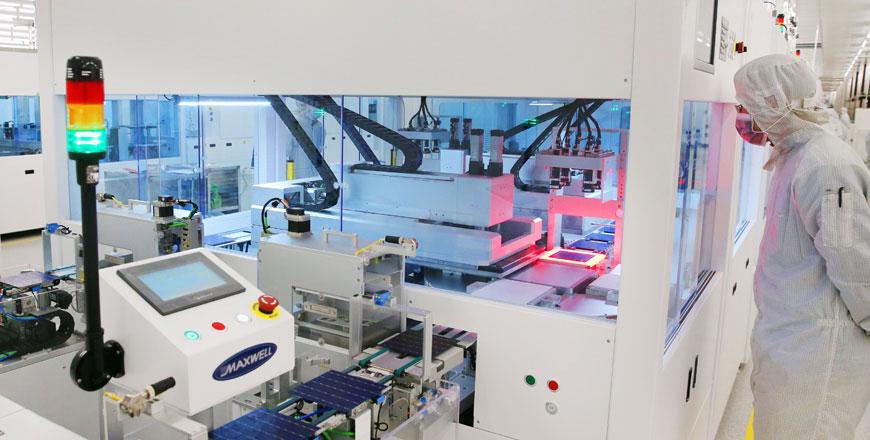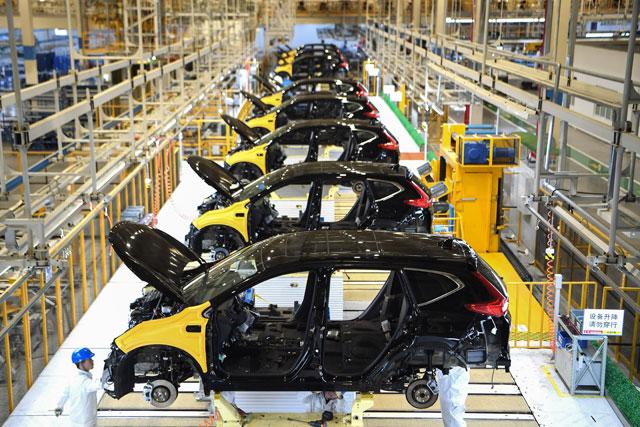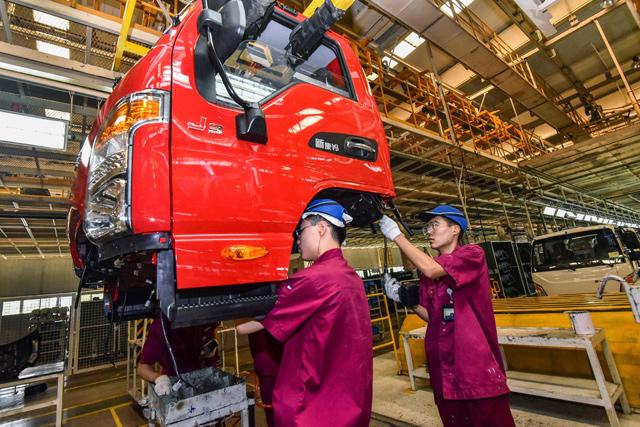You are here
China March factory growth stronger than expected — official PMI
By Reuters - Mar 31,2018 - Last updated at Mar 31,2018

This photo taken on Wednesday shows a Chinese employee observing the manufacturing process at a solar cell production line at a factory in Nantong, China's eastern Jiangsu province (AFP photo)
BEIJING — Growth in China's manufacturing sector picked up more than expected in March as authorities lifted winter industrial pollution restrictions and steel mills cranked up production as construction activity swings back into high gear.
The official Purchasing Managers' Index (PMI) released on Saturday rose to 51.5 in March, from 50.3 in February, and was well above the 50-point mark that separates growth from contraction on a monthly basis.
Analysts surveyed by Reuters had forecast the reading would pick up slightly to 50.5. February's print had been the lowest in one-and-a-half years, but many analysts suspected it was due to disruptions related to the long Lunar New Year holidays.
The March survey showed manufacturers shifted into higher gear as seasonal demand picked up. The sub-index for output jumped to 53.1 from 50.3 in February, while total new orders rose to 53.3 from 51 and export orders climbed to 51.3 from 49.
Driving the positive sentiment are better-than-expected exports in the first two months of the year, particularly in tech shipments, the fastest-growing segment of China's industrial sector.
A sub PMI for the hi-tech manufacturing sector stood at 53.2 in March, down from 54.0 in February.
However, a sharp escalation in trade tensions with the United States is clouding the outlook for both China's "old economy" heavy industries and "new economy" tech firms.
The Trump administration slapped hefty tariffs on steel and aluminium imports last week and then targeted China specifically by announcing plans for additional tariffs of up to $60 billion of Chinese goods, which are expected to focus largely on its tech and telecommunications products.
A resurgent yuan has also weighed on exporters' confidence. The Chinese currency has gained more than 3 per cent against the US dollar this year, on top of a 6.7 per cent rise in 2017.
This spring could see a major test of Chinese manufacturers' surprising one-and-a-half year run.
In the first quarter, China's steel companies defied expectations for a winter lull and continued to ramp up output in response to strong sales, while boosting borrowing, capital expenditure and hiring, a survey from the China Beige Book showed on Wednesday.
Production increased further after winter smog controls expired on March 15 in many areas.
A separate PMI on the steel sector rose to 50.6 in March from 49.5 in February, the China Logistics Information Centre said.
But the burst in output has pushed steel inventories to multi-year highs, sending prices sharply lower and reducing mills' profit margins.
At the same time, growth in property sales and new construction starts appears to be slowing, and Beijing has hit the brakes on some local governments' infrastructure spending due to concerns over high debt levels.
Overall, China's economic data so far this year suggest the economy has carried more growth momentum into the first quarter from last year than expected, with a government think tank forecasting the economy will grow 6.9 per cent in the first half.
That would keep synchronised global growth on track for a while longer. But economists are sticking to forecasts that China's pace will slow to around 6.5 per cent by the end of the year, weighed down by the cooling property market and rising borrowing costs, even if there are no global trade shocks.
Boosted by government infrastructure spending, a resilient housing market and unexpected strength in exports, China's manufacturing and industrial firms helped the economy produce better-than-expected growth of 6.9 per cent in 2017.
A sister survey showed activity in China's service sector rose in March.
The services sector accounts for over half of China's economy, with rising wages giving Chinese consumers more spending clout.
Related Articles
BRUSSELS — The eurozone economy returned to growth for the first time in six months in March, a closely watched survey said on Wednesday, as
BEIJING — China’s November factory activity rebounded for the first time in seven months, data showed on Saturday, despite the looming threa
BEIJING — Chinese factory activity stabilised in June, data showed on Wednesday, but output was hit by supply shortages of key commodities a















